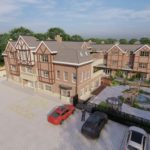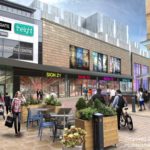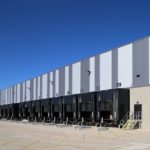Sector - Commercial
Looking at The Year Ahead 2021

At Lipton Plant Architects, we’ve spent a significant amount of research and design time over the last year on understanding how the rhythm of our cities and work life balance has been changing and how the Covid-19 pandemic has accelerated that change. As we approach the end of 2020, MD of Lipton Plant Architects, Jonathan Plant is looking forward to 2021 and the challenges and opportunities that we believe will be at the forefront of architectural design.
The movement to home/flexible working has long been discussed. Some companies were embracing it long before we knew about the current pandemic, but these companies were in the minority. Now Covid-19 has accelerated that thinking at a pace that we couldn’t have previously imagined. The impact is far reaching, from the design of the home to the city.
We are currently working with Transport for London on two station sites where we are considering not only the stations as transport hubs, but their ability to be destinations in themselves, places that will breathe new life into the local community and provide facilities that would not necessarily have been considered previously.
Many of us are used to the medley of the morning and evening rush hour through the station, with just enough time to grab a coffee, dry-cleaning or some vital ingredients for a quick evening supper. But with new working patters and the ability not to be tied to a desk, we’ve now realised the hours spent on commuting can be spent doing other things. And if we don’t need to be at work by 9am then maybe the city rhythm can be a gentler hum rather than a mad dash.
In designing these new station hubs, we’ve been developing the core ideas of the 15 and 20-minute city, whereby all one’s daily needs can be provided within a 15 or 20-minute walk or cycle of home. That includes shopping, entertainment, education, healthcare and also work. If you no longer need to be at your desk then why can’t the new centres we are developing have places to work too? Working from home shouldn’t just mean a space at the kitchen table, it can become part of your wider home community and importantly provide that physical ‘touch’ many of people have been missing.
Of course, in working with TfL we’re not only considering rail, we’re considering all forms of transport including road. If these stations can add to or even become the new plaza or town square that can provide many of your daily needs, there’s no need to always head into the city centre and clog the roads and certainly not all at the same time. This can have enormous environmental benefits, in particular allowing the roads to be reclaimed by walkers and cyclists and significantly reducing the goods and commuter traffic. There is no doubt the environmental performance is going to be at the forefront of every scheme we design and deliver in 2021.
This approach of developing new local hubs, without the need for travelling to a single central location, is in line with the model of the polycentric city and encourages cities (London already being a very successful example) to develop as a network of connected nodes, with highly connected and sustainable transport links at their heart. And as these nodes develop and form even stronger and more vibrant communities, we think some of the traditional central business districts will start to encourage a more mixed range of uses, encourage homes to develop and create new communities not only revolving around the business day.
The recently adopted changes to the planning system, in both the permitted development rights and use classes will allow a more rapid and significant change in how traditionally commercial business districts can develop. We think the planning debate can go further though. At the end of 2019 we developed a housing scheme for 80 homes, that included a residential work hub, dedicated for the use of the homeowners. Providing dedicated spaces to work from home, which are integral to the home, are going to play a very significant role in the desirability and enjoyment of new homes. We also think architects and planners should be re-visiting the now defunct live/work unit, a sui generis planning category, that fell out of favour in the mid 2000s but which may now have a renewed purpose for dedicated home working environments.
Where once live/work units were regarded with suspicion by local authorities, the National Planning Policy Framework encourages their consideration (NPPF paragraph 81(d)), stating that in producing planning policies, they should “be flexible enough to accommodate needs not anticipated in the plan, allow for new and flexible working practices (such as live-work accommodation), and to enable a rapid response to changes in economic circumstances.” Could that requirement ever have been more relevant?
For architects, the built form is the obvious output of what we do, but actually at the heart of what we are doing is nurturing and developing communities. The changing rhythm of the city, the home/work balance and environmental performance will all be key focuses for 2021; building communities however will underpin everything we approach.
If you would like to read more like this, then please click here
Related Articles
More Commercial Features
- From One-Time Project to Lifetime Client: How Smart Pricing Wins You Repeat Construction Work
26 Nov 25
Learn how to price construction work for profit and trust—turning one-time jobs into lifetime clients who keep your schedule full.
- From trades to transformation: Practical growth for SME construction firms
25 Jul 25
Many SME construction firms struggle to overcome common growth barriers.
- Ten years of progress on payment, pre-qualification and skills
19 May 25
The industry has made significant progress on late payment, pre-qualification, and competence since the formation of the trade body Build UK .






